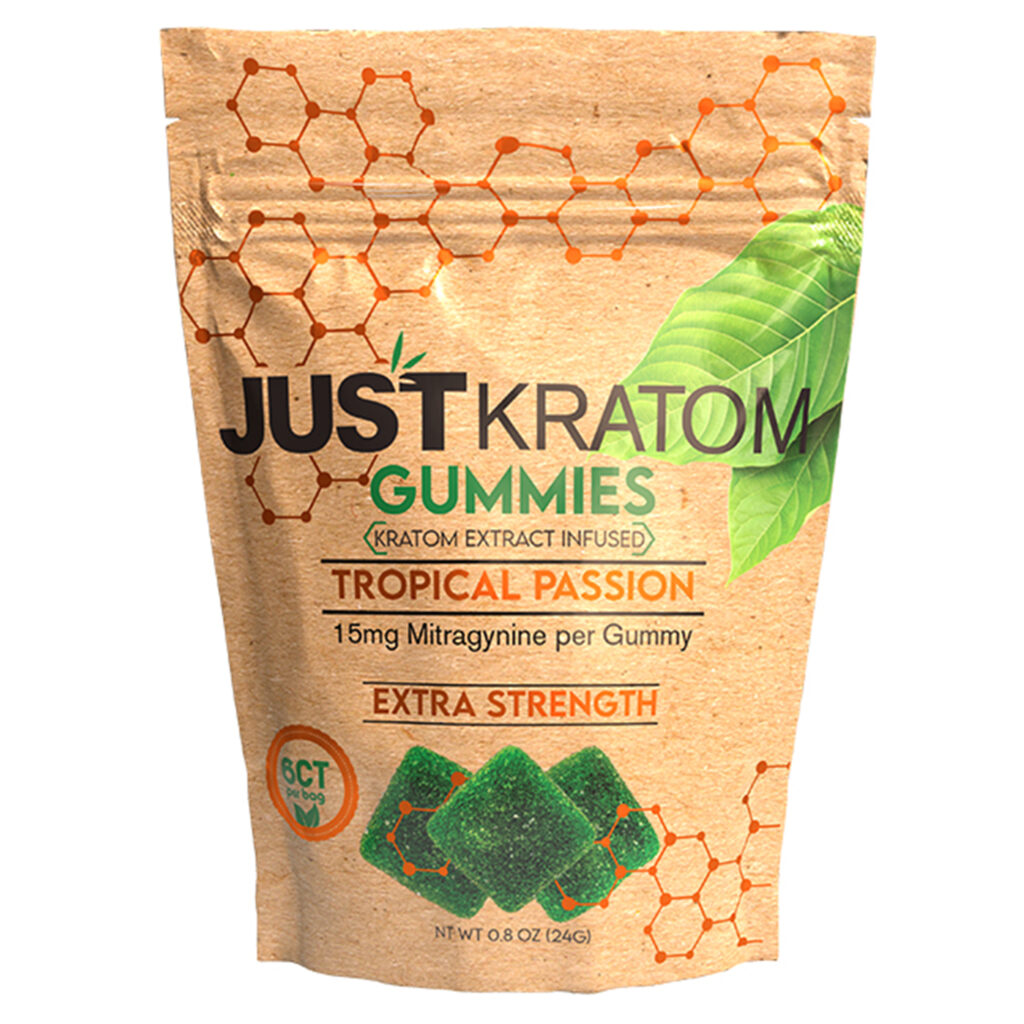Potential Benefits
The pursuit of optimal wellness has led many to explore diverse avenues, and kratom gummies have emerged as a compelling option. These chewable treats offer a convenient and palatable way to experience the potential benefits associated with kratom.
Pain Relief
One of the most notable potential benefits of kratom gummies is their ability to provide pain relief. Kratom contains compounds that interact with opioid receptors in the brain, which can help manage both acute and chronic pain.
Mood Enhancement
Mood enhancement is another area where kratom gummies show promise. Some individuals report experiencing feelings of euphoria, relaxation, and increased energy after consuming kratom. This mood-lifting effect may be attributed to kratom’s interaction with neurotransmitters in the brain, such as serotonin and dopamine.
It’s important to note that the effects of kratom can vary from person to person, and more research is needed to fully understand its mechanisms and long-term impacts.
Energy Boost
One significant potential benefit of kratom gummies is their ability to provide an energy boost. Kratom contains compounds that may stimulate the central nervous system, leading to increased alertness and reduced fatigue. This can be particularly beneficial for individuals struggling with low energy levels or experiencing mental sluggishness.
Potential Risks and Side Effects
While kratom gummies offer potential benefits, it is crucial to acknowledge the associated risks and side effects. Kratom can interact with other medications and may exacerbate existing medical conditions. Potential adverse effects include nausea, constipation, dizziness, and anxiety.
Gastrointestinal Issues
Gastrointestinal issues are a common concern associated with kratom consumption, particularly in individuals who are new to it or those who consume high doses. Nausea, vomiting, diarrhea, and stomach cramps can occur as the body adjusts to kratom’s effects.
It is important to start with low doses of kratom and gradually increase them as tolerated. Staying hydrated and eating bland foods may help minimize gastrointestinal discomfort. If you experience severe or persistent gastrointestinal issues, discontinue use and consult a healthcare professional.
Cardiovascular Concerns
Cardiovascular concerns are a potential risk associated with kratom consumption. While research is limited, there are reports of kratom affecting heart rate and blood pressure. It’s possible that kratom could exacerbate pre-existing cardiovascular conditions or pose a risk to individuals with underlying heart problems.
It is crucial for people with cardiovascular concerns to consult with their doctor before using kratom gummies or any other kratom products.
Addiction and Dependence
Another important consideration is the potential for addiction and dependence. Kratom can be habit-forming, and prolonged use may lead to physical and psychological dependence. Withdrawal symptoms, such as irritability, anxiety, insomnia, and muscle aches, can occur when kratom use is stopped abruptly.
It’s essential to use kratom responsibly and avoid exceeding recommended dosages. If you suspect you are developing a dependence on kratom, seeking professional help from a healthcare provider or addiction specialist is crucial.
The long-term effects of kratom consumption are not yet fully understood. More research is needed to determine the potential risks associated with chronic use. It’s important to approach kratom with caution and prioritize your overall health and well-being.
Dosage and Administration
Dosage and administration play a crucial role in determining the safety and efficacy of any substance, including kratom gummies. The optimal dosage can vary depending on individual factors such as body weight, metabolism, and desired effects. It is essential to start with low doses and gradually increase them as tolerated while closely monitoring for any adverse effects.
Recommended Intake
It is generally recommended to start with a small dose of 1-3 grams of kratom powder or the equivalent in gummies. You can then adjust the dosage based on your individual response.
It’s important to note that higher doses may increase the risk of side effects, and exceeding recommended dosages can be dangerous.
Kratom gummies can be taken orally at any time of day. They are absorbed into the bloodstream relatively quickly, with effects typically being felt within 30 minutes to an hour.
Factors Influencing Dosage
Dosage and administration are crucial factors in determining the safety and efficacy of kratom use. The optimal dosage is highly individual and can vary based on factors such as body weight, metabolism, tolerance, and desired effects.
It is always recommended to start with a low dose (1-3 grams of kratom powder or equivalent in gummies) and gradually increase it as needed while closely monitoring for any adverse effects.
Higher doses may increase the risk of side effects, and exceeding recommended dosages can be dangerous.
Kratom gummies can be taken orally at any time of day. They are generally absorbed quickly into the bloodstream, with effects typically noticeable within 30 minutes to an hour.
Consumption Guidelines

Dosage and administration are crucial factors in determining the safety and efficacy of kratom use. The optimal dosage is highly individual and can vary based on factors such as body weight, metabolism, tolerance, and desired effects.
It is always recommended to start with a low dose (1-3 grams of kratom powder or equivalent in gummies) and gradually increase it as needed while closely monitoring for any adverse effects.
Higher doses may increase the risk of side effects, and exceeding recommended dosages can be dangerous.
Kratom gummies can be taken orally at any time of day. They are generally absorbed quickly into the bloodstream, with effects typically noticeable within 30 minutes to an hour.
Legal Status and Regulations
The legal status and regulations surrounding kratom vary significantly across the globe. While some countries have banned kratom entirely, others have adopted a more permissive approach, allowing for its sale and consumption under specific conditions. In some regions, kratom is considered a dietary supplement, while in others it is classified as a controlled substance.
Varying Legality Across Jurisdictions
The legal status and regulations surrounding kratom vary significantly across the globe. While some countries have banned kratom entirely, others have adopted a more permissive approach, allowing for its sale and consumption under specific conditions. In some regions, kratom is considered a dietary supplement, while in others it is classified as a controlled substance.
- The United States has no federal ban on kratom, but several states have enacted their own regulations or bans.
- In Europe, the legal status of kratom varies from country to country. Some countries, such as Germany and Poland, have banned kratom, while others allow its sale and consumption under certain restrictions.
- Australia has classified kratom as a Schedule 9 prohibited substance, meaning it is illegal to possess or use.
- Canada considers kratom a controlled substance, making it illegal to import, export, sell, or possess.
Safety Standards and Labeling Requirements
Safety standards and labeling requirements for kratom gummies can vary depending on the region. In some areas with regulatory oversight, manufacturers may be required to adhere to specific guidelines regarding ingredients, potency, manufacturing processes, and labeling information.
- It is essential to purchase kratom gummies from reputable sources that prioritize quality control and safety.
- Look for products that have been independently lab-tested to verify their potency and purity.
- Always read the product label carefully, paying attention to the dosage information, ingredients list, and any warnings or contraindications.
Interactions with Medications and Other Substances
Interactions with Medications and Other Substances
Potential Drug Interactions
Kratom can interact with various medications and substances, potentially leading to adverse effects or reduced effectiveness of treatments.
It’s crucial to consult a healthcare professional before using kratom if you are taking any medications, as it may interfere with their actions.
Some examples of potential drug interactions include:
* **Opioid Medications:** Kratom also interacts with opioid receptors in the brain, so combining it with opioids like morphine or oxycodone can increase the risk of serious side effects, including respiratory depression and overdose.
* **Blood Thinners:** Kratom may have blood-thinning properties, which could amplify the effects of anticoagulants like warfarin, increasing the risk of bleeding.
* **Antidepressants:** Kratom may interact with antidepressants, potentially altering their effectiveness or causing serotonin syndrome, a serious condition involving elevated serotonin levels in the body.
* **Stimulants:** Combining kratom with stimulants like caffeine or amphetamines can lead to increased anxiety, insomnia, and heightened cardiovascular effects.
It’s essential to be aware of these potential interactions and to discuss your medication regimen with a healthcare professional before using kratom. Remember, safety should always be prioritized when exploring alternative substances like kratom.
Combined Use Considerations
Kratom can interact with various medications and substances, potentially leading to adverse effects or reduced effectiveness of treatments. It’s crucial to consult a healthcare professional before using kratom if you are taking any medications, as it may interfere with their actions.
Some examples of potential drug interactions include:
- Opioid Medications: Kratom also interacts with opioid receptors in the brain, so combining it with opioids like morphine or oxycodone can increase the risk of serious side effects, including respiratory depression and overdose.
- Blood Thinners: Kratom may have blood-thinning properties, which could amplify the effects of anticoagulants like warfarin, increasing the risk of bleeding.
- Antidepressants: Kratom may interact with antidepressants, potentially altering their effectiveness or causing serotonin syndrome, a serious condition involving elevated serotonin levels in the body.
- Stimulants: Combining kratom with stimulants like caffeine or amphetamines can lead to increased anxiety, insomnia, and heightened cardiovascular effects.
It’s essential to be aware of these potential interactions and to discuss your medication regimen with a healthcare professional before using kratom. Remember, safety should always be prioritized when exploring alternative substances like kratom.
Long-Term Effects and Research Gaps

While the potential benefits of kratom gummies are being explored, there remain significant gaps in our understanding of their long-term effects. More research is needed to fully elucidate the potential risks and benefits associated with prolonged kratom use.
Limited Long-Term Studies
One major gap in research concerns the long-term consequences of kratom consumption. Studies on the chronic effects of kratom are limited, making it difficult to assess the potential risks associated with extended use.
- Longitudinal studies tracking individuals over extended periods are needed to understand the cumulative effects of kratom on various bodily systems.
- Research is also lacking on the long-term impact of kratom on cognitive function, mental health, and addiction potential.
Another significant research gap involves a comprehensive understanding of kratom’s mechanisms of action. While it is known to interact with opioid receptors, the precise ways in which kratom affects the brain and body are not fully elucidated. Further research is needed to:
- Identify all the active compounds in kratom and their specific effects.
- Elucidate the complex interactions between kratom compounds and various neurotransmitter systems.
The variability in kratom products poses a challenge for research. Kratom plants can contain varying concentrations of alkaloids depending on factors such as growing conditions, harvesting methods, and processing techniques. Standardizing kratom products to ensure consistent dosages and compositions is crucial for conducting reliable research.
Ongoing Research and Future Directions
Ongoing research seeks to address these gaps and provide a more comprehensive understanding of kratom’s effects. Studies are being conducted on the long-term impacts of kratom use, potential mechanisms of action, and interactions with other substances.
Future directions for kratom research include:
- Large-scale, longitudinal studies to investigate the chronic effects of kratom consumption on various health outcomes.
- In-depth investigations into the specific mechanisms by which kratom interacts with the brain and body, including its influence on neurotransmitter systems and potential impact on cognitive function.
- Development of standardized kratom products to ensure consistency in dosage and composition for research purposes.
- Exploration of potential therapeutic applications of kratom for conditions such as chronic pain, opioid dependence, and anxiety, while carefully considering the risks and benefits.
Order Kratom Gummies that support your wellness
- Profhilo Treatment Near Compton, Surrey - November 4, 2025
- Polynucleotides Injectables Near Shepperton, Surrey - November 2, 2025
- Polynucleotides Injectables Near Dunsfold, Surrey - October 31, 2025
